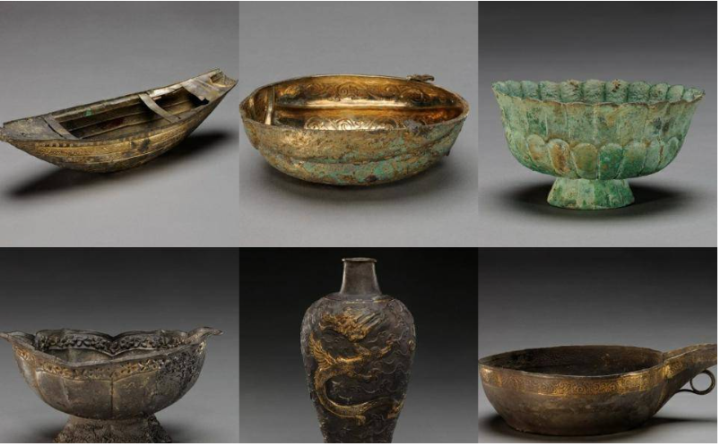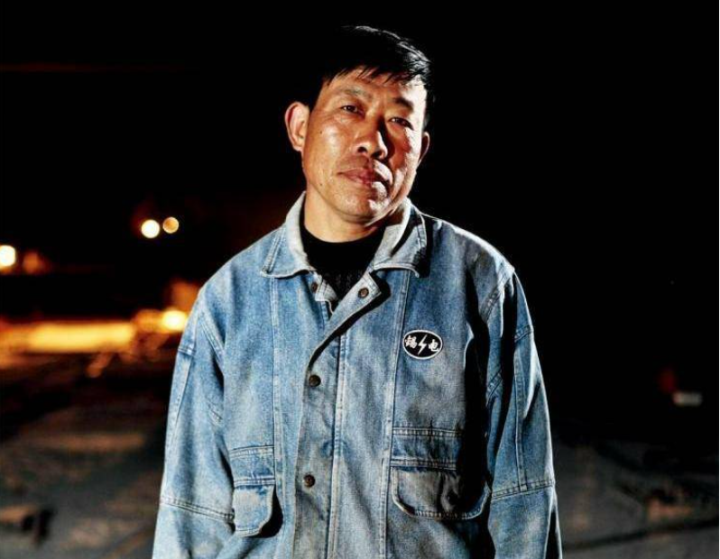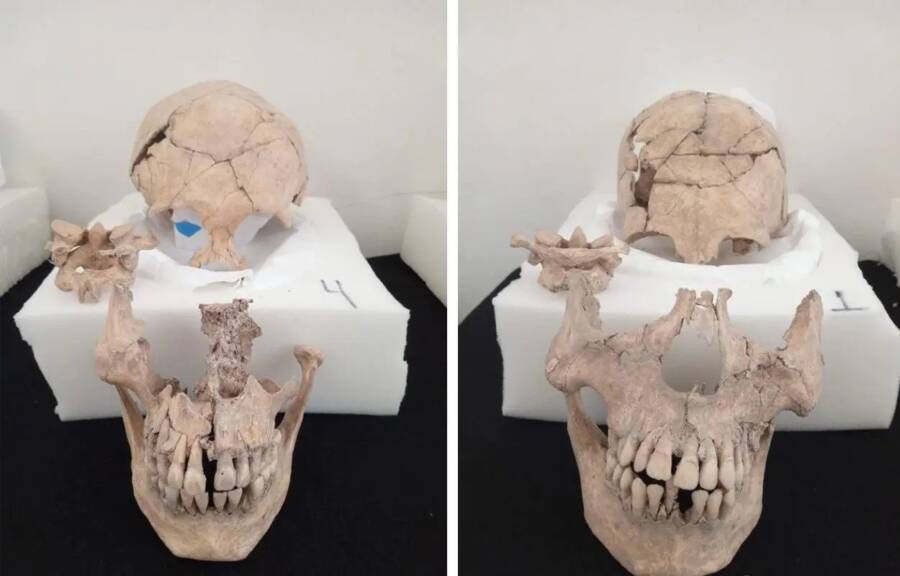In the fall of 1985, in Guxiang Village, Shangshui County, Henan Province, China, a farmer named He Gang decided to make tofu to increase his income. He dug a hole in his garden to make room for a stone mill. At this moment, his shovel suddenly hit something. He carefully dug up the surrounding soil, and it turned out that underneath was a large chest.
Inside the chest were some pretty nice looking antiques. After cleaning them, he realized they were some ceramic vases, plates, boats… made of gold and silver. Ha Cuong knew he had dug up a treasure trove of antiques.
Unexpectedly, the news of Ha Cuong’s discovery of the antiques spread, and many antique dealers came to him. They all offered very high prices, but he refused to sell. He wanted to give the antiques to the village party secretary, Liu Hong En. This secretary contacted his friend, Cui Bao Xian, who worked as a security guard at the Palace Museum in Beijing, for help.

Yuan Dynasty antiques dug up by farmers. (Photo: Sohu)
Ha Cuong and the village secretary took a train to Beijing and handed over all 19 antiques to experts at the museum. According to the scientists’ assessment, these gold and silver items were all cultural relics of the Yuan Dynasty.
Antiques from this era are very rare. Moreover, at that time, the ancients had very high demands for gold and silver items, and even the slightest mistake would cause them to be destroyed. There were not many items from the Yuan Dynasty in the Forbidden City Museum, so the antiques that He Gang provided were very valuable. The museum representative gave He Gang 9,000 yuan (about 31 million VND), of which 8,000 yuan was a reward and 1,000 yuan was for travel expenses.
Ha Cuong returned home and continued to work as a farmer. His life was always difficult, he worked many jobs from collecting trash, construction to gardening to make ends meet. However, he never regretted giving away the antiques.
In 2003, Ha Cuong’s family suffered a major setback. His wife fell seriously ill and all the money in the family was used to treat her. Ha Cuong was in dire straits. Seeing this, a neighbor suggested that Ha Cuong write a letter of appeal to the leadership of the Palace Museum. The museum then sent Ha Cuong 50,000 yuan (over 170 million VND), but his wife still did not survive.

The Palace Museum gave Ha Cuong nearly 1 billion VND to help him when he was in trouble. (Photo: Sohu)
In 2006, Ha Cuong’s father fell ill again, almost blinding his eyes, and his family was in dire straits again. Ha Cuong even owed 40,000 yuan (over 136 million VND) for his father’s medical bills. Neighbors suggested that Ha Cuong ask the Palace Museum for help again. They said that the antiques he donated were so valuable that asking the museum’s leadership for help “would be pointless”.

In desperation, Ha Cuong had to ask the museum manager for help. This time, the museum sent him 50,000 yuan (more than 170 million VND).
But bad luck still did not let him go. Not long after, his mother fell and broke her ribs, and Ha Cuong’s family lost a large sum of money.

Ha Cuong – a farmer who unearthed 19 gold and silver objects from the Yuan Dynasty. (Photo: Sohu)
On May 30, 2017, Ha Cuong passed away on his way to work at the age of 54. To commemorate his contributions, the Palace Museum held a memorial service. Due to the financial difficulties of Ha Cuong’s family, the museum decided to give 100,000 yuan (over 340 million VND) for living expenses. The county’s Cultural Bureau also sent an additional 20,000 yuan (over 68 million VND) to express condolences to his family.
Source: Sohu




